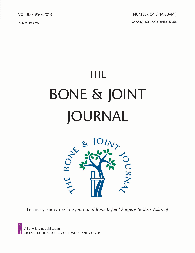
TRAUMA
High probability of cost-efficacy for nailing vs. plating of distal tibia Frx at low WTP thresholds
Bone Joint J. 2018 May 1;100-B(5):624-633321 patients with a distal tibial fracture were randomized to fixation with either an intramedullary nail (IMN) or a locking plate (LP). The purpose of this study was to compare cost-effectiveness of an intrmaedullary nail to a locking plate based on 12-month follow-up. Cost data demonstrated lower total societal cost and National Health Service (NHS) cost in the IMN group compared to the LP group, with similar gain in quality-adjusted life years between groups. Resulting probabilities of IMN fixation being cost-effective relative to LP fixation were above 90% at each willingness-to-pay threshold of £15,000, £20,000, and £30,000.
Unlock the full ACE Report
You have access to {0} free articles per month.Click below to unlock and view this {1}
Unlock NowCritical appraisals of the latest, high-impact randomized controlled trials and systematic reviews in orthopaedics
Access to OrthoEvidence podcast content, including collaborations with the Journal of Bone and Joint Surgery, interviews with internationally recognized surgeons, and roundtable discussions on orthopaedic news and topics
Subscription to The Pulse, a twice-weekly evidence-based newsletter designed to help you make better clinical decisions
Exclusive access to original content articles, including in-house systematic reviews, and articles on health research methods and hot orthopaedic topics
Or upgrade today and gain access to all OrthoEvidence content for just $1.99 per week.
Already have an account? Log in


Subscribe to "The Pulse"
Evidence-Based Orthopaedics direct to your inbox.
{0} of {1} free articles
Become an OrthoEvidence Premium Member. Expand your perspective with high-quality evidence.
Upgrade Now












































































